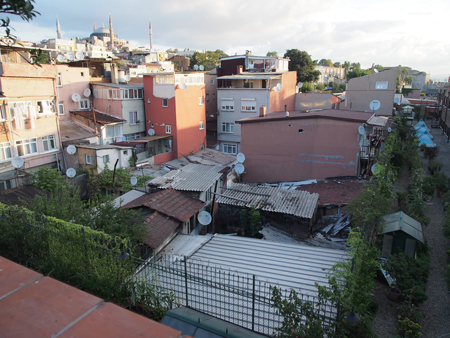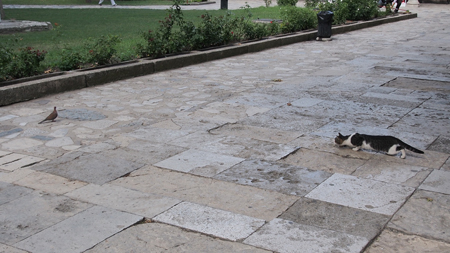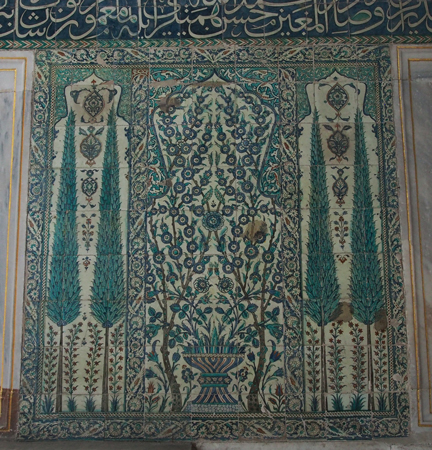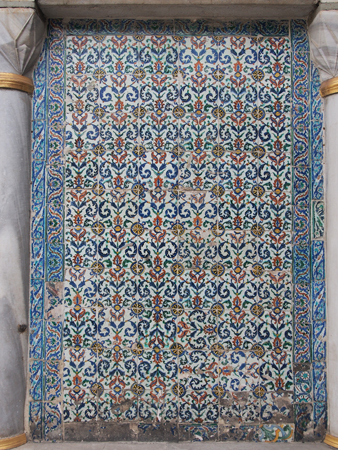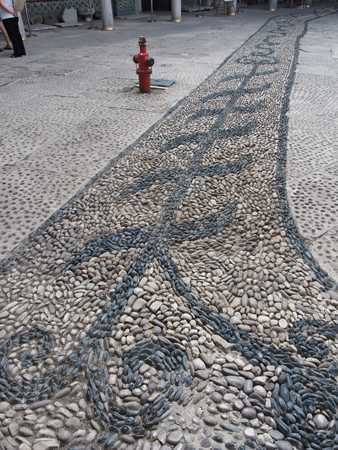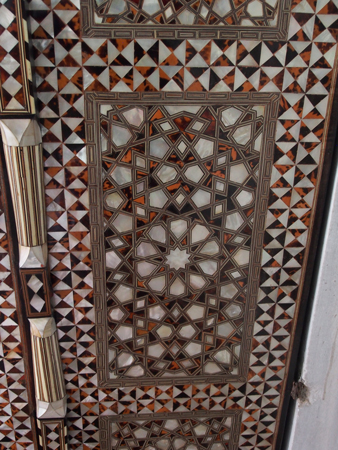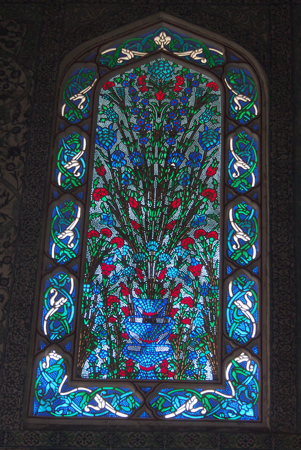After our Windstar cruise from Istanbul to Athens, we flew back to Istanbul to begin our Road Scholar Voyages to Antiquity tour around the Black Se on the Agean Odyssey. This tour included several days touring in Istanbul, something we really like to do even though we have been there several times before. It is a fascinating city.
| 8/29-9/1 | Istanbul; Bosphorus |
| 9/3 | Trabzon, Turkey |
| 9/4 | Batumi, Georgia |
| 9/5 | Feodosiya, Ukraine |
| 9/6 | Yalta, Ukraine |
| 9/7-8 | |
| 9/9-10 | Odessa, Ukraine |
| 9/11 | Nessebar, Bulgaria |
| 9/12 | Istanbul to Denver |
|
Map of the Road Scholar Voyages to Antiquity tour around the Black Sea (Istanbul counterclockwise to Istanbul)
|
|
Thurs., 8/29/13 - Istanbul and the start of our Road Scholar Tour of the Black Sea
We went up to the third floor terrace for a very nice buffet breakfast. We could even squeeze oranges for fresh juice – Gale opted for what was called “forest fresh sherbet” juice. It was purple and had a hint of cinnamon. Instead of scrambled eggs they had a large round pan of “omelet” with tomato, ham, and onion - like frittatas. There were all kinds of nuts, fruits, cheeses, yogurt, cereal, and rolls. We were hungry from yesterday’s adventure – and little food – and really enjoyed ourselves. The view from the terrace is of the top of the Blue Mosque and Hagia Sofia on one side (which we also see from our room) and of the shipping on the Sea of Marmara.
It was too hot to go out and do much, so we opted for a recovery day in the room.
At 6 PM we met our Road Scholar group of 36 people and the tour director, Eleni, and the Istanbul guide, Sami. Eleni is a Greek from Athens and has been in tourism for 38 years. Our group is the usual mix of retired nurses, educators, computer people, etc.
We had dinner on the hotel terrace. It was very pleasant up there. We had a Turkish menu but I don’t have names for anything but the grape leaves stuffed with meat and rice. It was served with wonderful yogurt.Fri., 8/30/13 – Istanbul – Victory Day in Turkey (In 1932 Turkey became a republic.)
Our Istanbul guide is very knowledgeable but talks endlessly. It is interesting that he considers himself one of the 95% of the population that is Sunni Moslem but doesn’t practice the rituals and did not have good explanations of the religion or mosques.
Our Friday tour began with a visit to the Museum of Archeology on the grounds of the Topkapi Palace. There are several museums in this complex.
We looked at other relics and then went upstairs to a new exhibit on the Roman Hidden Harbor of Yenika that was discovered recently as Turkey started to build a subway under the Sea of Marmara to connect the European and Asian sides of Istanbul. Thirty-seven shipwrecks have been identified.
Gale at the shoe-shine stand
|
Tiled Kiosk Pavillion |
Tile on the Tiled Kiosk Pavillion
|
Very ancient skeleton in the Museum of Archeology |
We also went through the Museum of the Ancient Orient. Most of these Mesopotamian glazed wall tiles are now in the Pergamum Museum in Berlin, which we saw in 2012. Some of the painted reliefs of bulls and dragons that lined the Procession Street in Babylonia in the 4th c. BCE were on display. The highlight of this museum (and not stolen to another country) is the small cuneiform of the 1250’s BCE peace treaty between the Hittites and Egypt. The Kadesh Treaty is the oldest peace treaty in known ancient history.
|
|
Panels from the Ishtar Gate in the Museum of the Ancient Orient
|
Panels from the Ishtar Gate in the Museum of the Ancient Orient |
Hieroglyphics in the Museum of the Ancient Orient
|
Kadesh Treaty in the Museum of the Ancient Orient |
Next our group of 36 walked to Hagia Sophia. Three churches have been built on this site, the present one in 537 CE. Because of earthquakes and age, some of the walls are leaning out and the floors in the balcony are cracked and slanted. Much restoration is ongoing. (See the descriptions from 2009 - use your back arrow to return here) In 1204 to 1264, the 4th crusade sacked and devastated Istanbul and Hagia Sophia. In 1453 the Turks invaded and sacked the city. We are lucky anything has survived.
|
Hagia Sophia - looking down from the balcony
|
Hagia Sophia - the dome
|
Hagia Sophia - dome detail |
Hagia Sophia - mosaics |
Hagia Sophia - Macchia aperta marble
|
Muslim artwork imposed over Christian artwork
|
We went to an included lunch and it was good to sit down for a while. The entre meal was an unusual stuffed, baked melon. It was delicious. After lunch we visited the Basilica Cistern (lately of Inferno [Dan Brown] fame) and then walked, slowly, up to the Hippodrome where the ancients used to race horses around the narrow oval. In the middle of the Hippodrome is two-thirds of an1490 BCE Egyptian obelisk from Karnak, in Luxor, and the Serpent column. |
Stuffed baked melon |
Medusa head in the Basilica Cisterns
|
Serpent column in the Hippodrome |
Serpent column in the Hippodrome
|
Blue Mosque just after sunrise
|
|
Blue Mosque |
Blue Mosque
|
Very interesting speed bump
|
|
Sat., 8/31/13 – Istanbul (If you like looking at the tile work, there are many sites on the internet. Google Topkapi Palace).
|
|
Behind the hotel
|
Stalking cat at Topkapi Palace - the bird won |
Tile at Topkapi Palace
|
Tile in the Harem |
Mosaic in the courtyard of The Favorites
|
Wood and pearl inlays at Topkapi Palace |
Wood and pearl inlays at Topkapi Palace
|
Stained glass at Topkapi Palace |
Tile at Topkapi Palace
|
Tile at Topkapi Palace |
Istanbul from Topkapi Palace
|
|
| Return to Top | Return to Itinerary | Return to Trips page to view other trips | Return to Dreamcatcher Home Page |
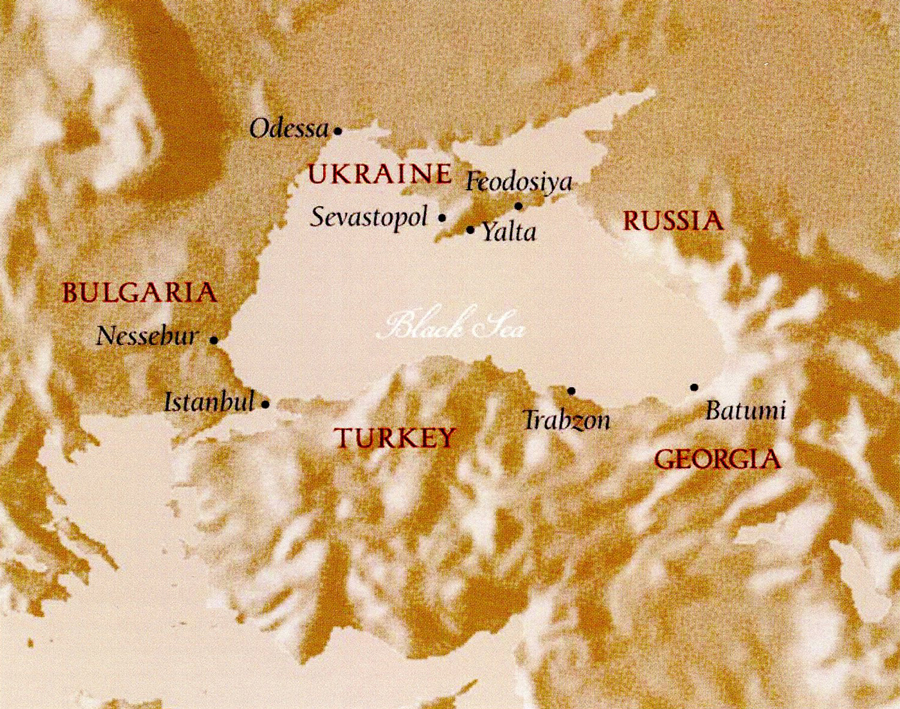
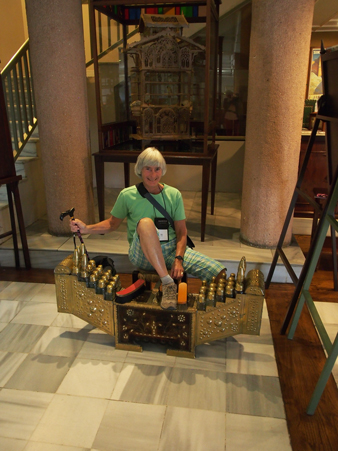
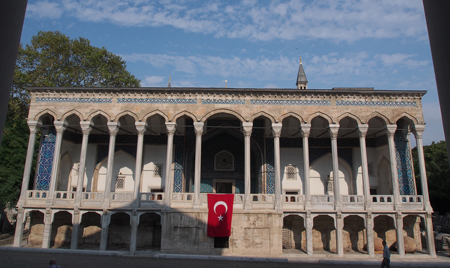
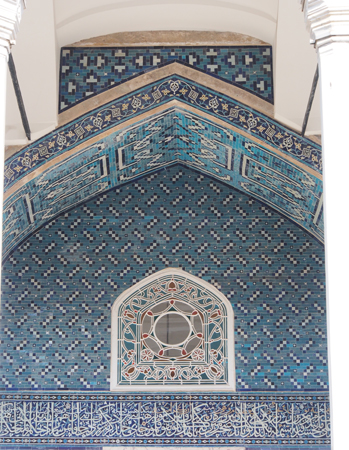
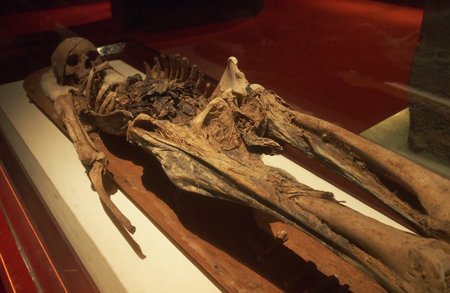
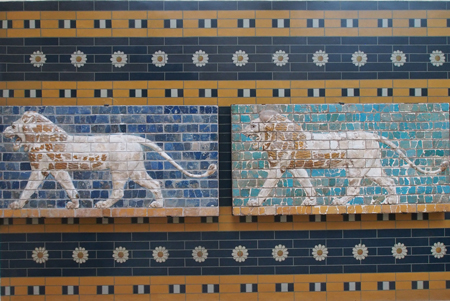
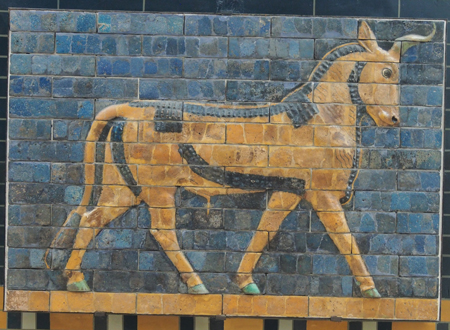



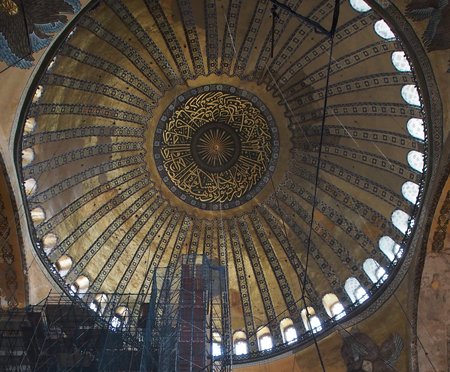
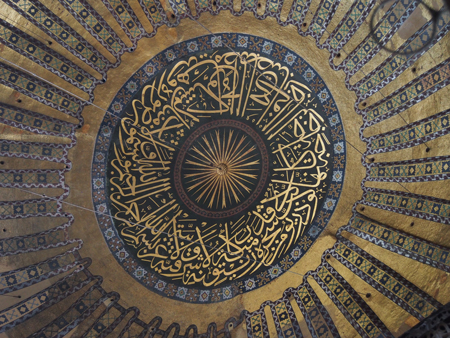
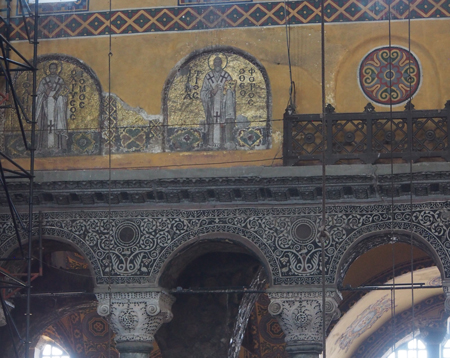
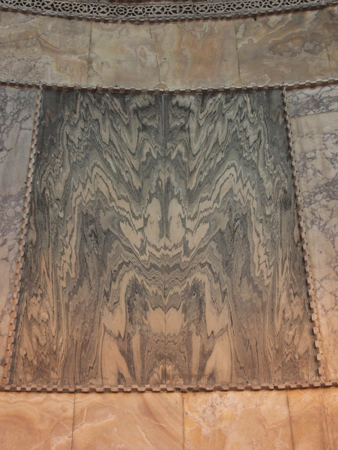
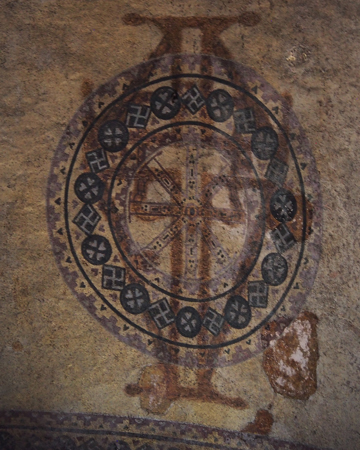

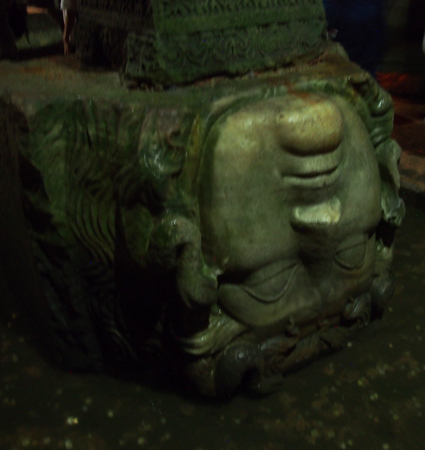
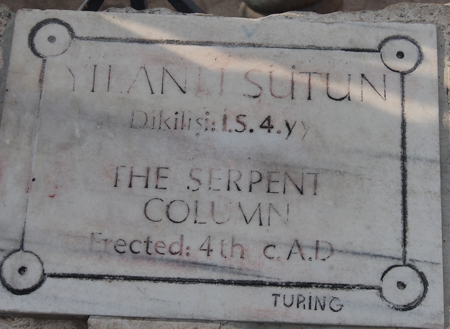

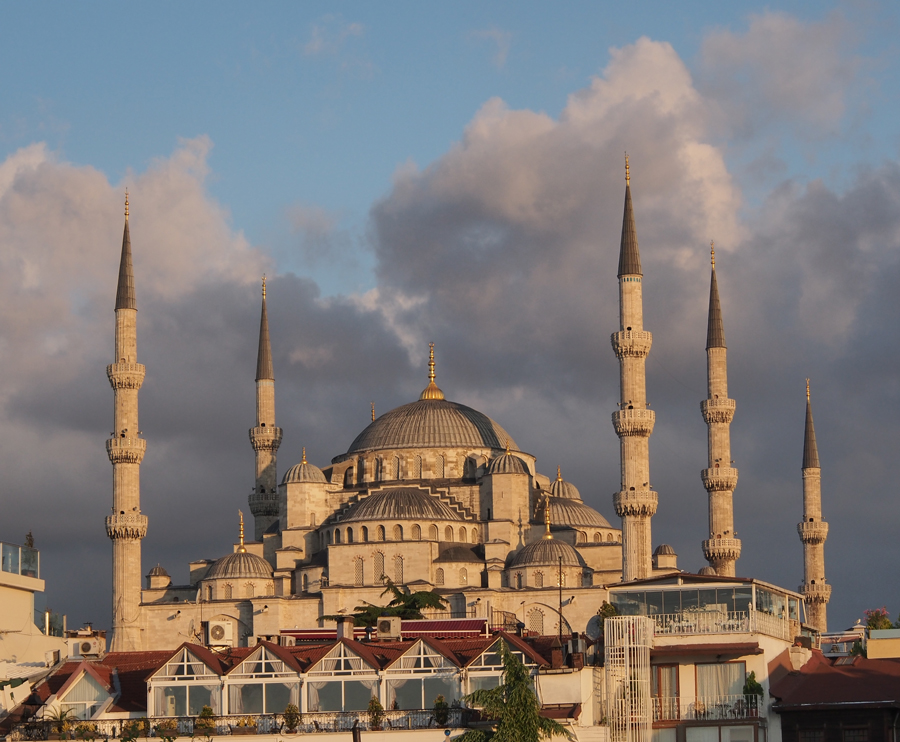

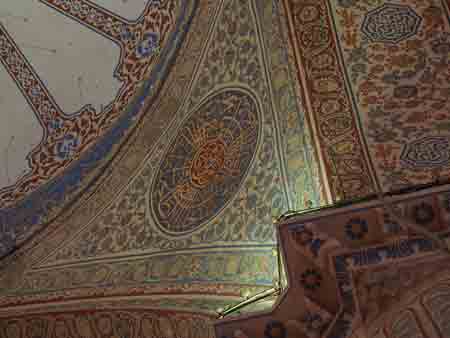
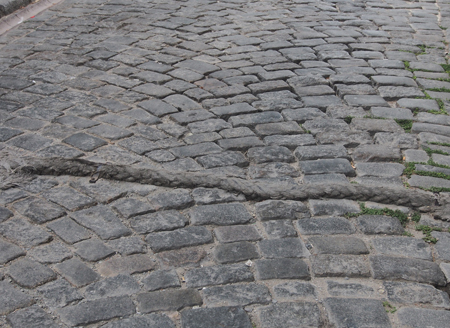
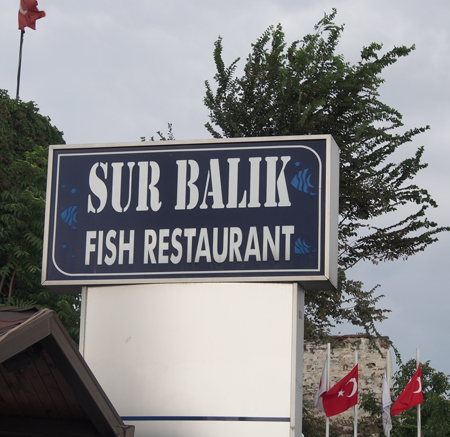 Dinner tonight was a traditional Turkish meal with several starters and flat bread. The entree was fish. The Sur Balik Fish Restaurant was on Kennedy Blvd. around the corner from our hotel and at the seaside.
Dinner tonight was a traditional Turkish meal with several starters and flat bread. The entree was fish. The Sur Balik Fish Restaurant was on Kennedy Blvd. around the corner from our hotel and at the seaside.